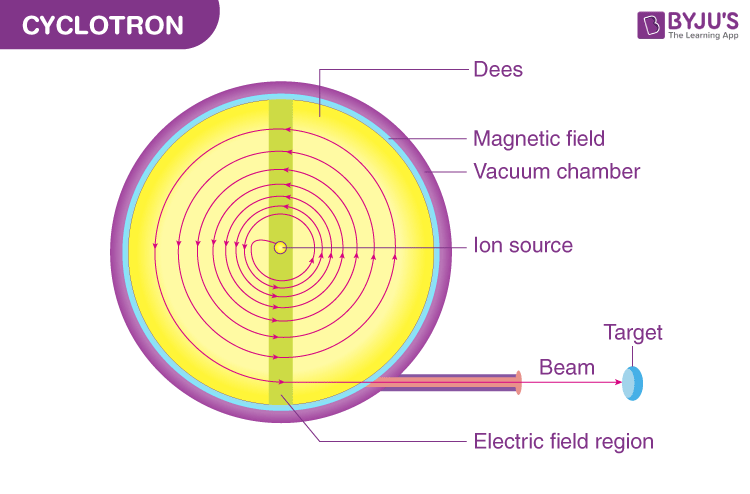In the realm of particle physics, the cyclotron emerges as a pivotal instrument akin to an intricate dance of charged particles, choreographed by the hand of electromagnetic forces. This enigmatic device propels ions to extraordinary velocities, rendering the essence of atomic behavior tangible. Delving into the nuances of the cyclotron reveals not only its operational principles but also its profound implications across various scientific domains.
The Genesis of the Cyclotron
The cyclotron was conceived in the early 20th century, a time marked by burgeoning advancements in quantum mechanics and the quest to unravel the structure of matter. At its core, the cyclotron epitomizes the marriage of ingenuity and scientific pursuit, harnessing the fundamentals of electromagnetism to achieve what was once deemed unattainable—accelerating particles to relativistic speeds.
Fundamental Principles of Operation
To comprehend the mechanics of the cyclotron, one must first grasp the principles of circular motion and electromagnetic fields. The device functions primarily on two key phenomena: the Lorentz force, which dictates the motion of a charged particle in a magnetic field, and the concept of frequency and resonance. Within this device, charged particles are emitted from a source, typically an ion source, and are subsequently injected into a circular chamber. This chamber is encircled by powerful electromagnets that create a uniform magnetic field.
As the charged particles traverse the circular path, an oscillating electric field is introduced through dees—two semi-circular electrodes. The electric field accelerates the particles each time they traverse a gap between the dees, resulting in a gradual spiral trajectory that propels them towards higher energies. The rhythm of acceleration mirrors the cadence of a maestro guiding an orchestra, each particle an instrument keenly responding to its conductor’s cues.
Temporal Dynamics: The Role of Frequency
The cyclotron operates with a specific resonance frequency, fundamentally linked to the charge-to-mass ratio of the particle being accelerated. This frequency dictates the timing of the oscillating electric field, ensuring that particles receive maximal energy at every revolution. The synchronization of these frequencies serves as a foundation upon which the cyclotron’s efficacy rests, emphasizing the delicate balance necessary for optimal operation. Any deviation in this frequency may result in diminished acceleration or energy loss, akin to a musician playing out of tune, disrupting the harmony of the overall performance.
Applications: A Portal to the Subatomic World
The applications of cyclotrons are manifold, extending their utility into areas such as nuclear medicine, materials science, and fundamental research in particle physics. In nuclear medicine, for instance, cyclotrons are integral in the production of radioisotopes used in diagnostic imaging. The scintillations recorded during positron emission tomography (PET) scans unveil the inner workings of the human body, revealing maladies previously obscured by the veil of uncertainty. Here, the cyclotron serves not merely as a machine, but as a beacon illuminating the intricate dance of life at the molecular level.
In the realm of fundamental research, the cyclotron has facilitated discoveries that have reshaped our understanding of the universe. High-energy cyclotrons are employed to probe the depths of matter, investigating the properties of fundamental particles such as protons, neutrons, and quarks. These particle collisions mirror cosmic events that transpired in the infancy of the universe, offering a glimpse into the underlying framework of existence.
The Future of Cyclotron Technology
As technology continues to evolve, the design and functionality of cyclotrons are also undergoing transformation. The advent of compact cyclotrons has revolutionized accessibility, allowing smaller institutions and hospitals to harness this powerful tool without extensive infrastructure. The integration of advanced superconducting materials promises to enhance efficiency and minimize energy consumption, thereby reducing operational costs while amplifying output.
Moreover, researchers are exploring the incorporation of artificial intelligence and machine learning to optimize acceleration parameters, improving real-time adjustments within the cyclotron. This futuristic approach heralds a new era in particle physics, where the amalgamation of technology and innovation paves the way for unprecedented discoveries.
A Metaphor of Unity and Discovery
The cyclotron can thus be viewed as a microcosm of the universe—a device that embodies not only the quest for knowledge but also the interconnectedness of various scientific disciplines. Just as celestial bodies orbit within the confines of gravitational fields, particles in the cyclotron are held in their orbits by electromagnetic forces, illustrating a harmonious balance between acceleration and resistance. This interplay encapsulates the very essence of scientific inquiry: a continuous cycle of questioning, experimentation, and enlightenment.
Conclusion
In conclusion, the cyclotron is far more than a mere particle accelerator; it is a testament to human ingenuity and the relentless pursuit of knowledge. Through its intricate design and operational principles, it serves as a bridge connecting the macroscopic realm of observable phenomena to the elusive subatomic world. As we stand on the precipice of discovery, the cyclotron remains an indispensable ally in our quest to decipher the mysteries of the universe, inviting scientists and scholars alike to continue their explorations of the unknown.












